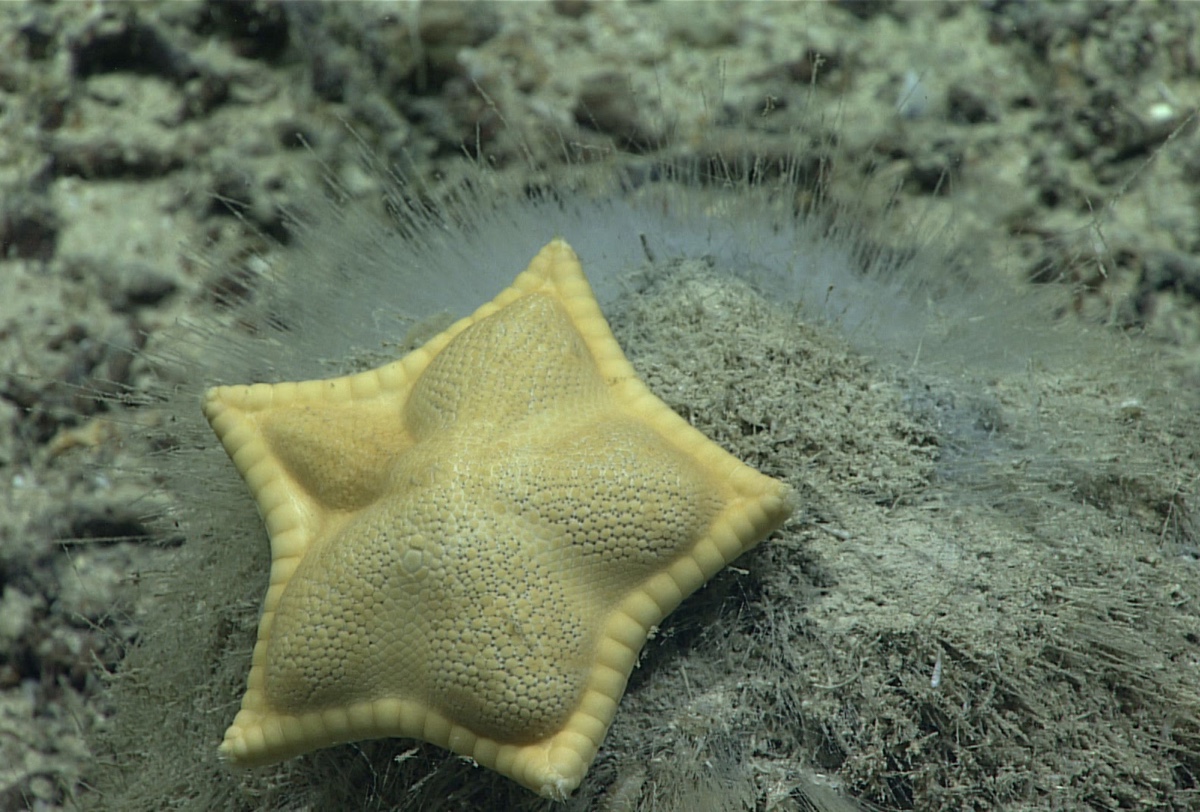Don't Be Confused If This Starfish Makes Your Mouth Water

If this starfish is making your mouth water, you're not alone. When a photo of Plinthaster dentatus went viral on Twitter last week, pasta-lovers did a double take — the sea star looked just like a piece of ravioli.
The photo of the starfish, captured on the National Oceanic and Atmospheric Administration's recent expedition to the deep Atlantic Ocean, propelled the tasty looking echinoderm to fame. But until now, the "ravioli" star (also called the cookie star) was a bit of a nobody.
Even though scientists have known of the ravioli star for some time, only recently did the creature get a common (non-Latin) name, Christopher Mah, an invertebrate biologist at the Smithsonian Museum at Natural History, told Live Science. Instead, the starfish was known only by its formal scientific name, P. dentatus. [Photos: See the World's Cutest Sea Creatures]
That's because until now, people rarely had the chance to observe the starfish in its natural habitat. Most of what scientists know about the ravioli star comes from specimens that were already dead, Mah said. Now, with the advent of remotely operated vehicles like NOAA's Deep Discoverer, which captured rare footage of ravioli stars, everyone has virtual access to these creatures.
It was sometime in the last year that Mah began hearing the names "cookie star" and "ravioli star" bouncing around the internet.
"It's just kind of amusing to me," Mah said, "[The name] just took off so quickly."
The starfish isn't new or unusual — it has existed at the depths of the ocean for much longer than its moniker. But the way Twitter is interacting with the ravioli star and other marine wonders is completely novel, Mah said. Just the fact that the internet has bred a new name for these creatures is evidence of a new kind of citizen science, he added. That's a good thing.
Sign up for the Live Science daily newsletter now
Get the world’s most fascinating discoveries delivered straight to your inbox.
"Any kind of connection that I think the public has with natural history, with nature is important," Mah said.
As for the ravioli star, its moment in the spotlight is only just beginning. This is an exciting moment for deep-sea creatures like the pasta doppelganger, Mah said. For the first time, scientists have the chance to study how they interact with their environment — what they eat, how they reproduce and how they navigate their underwater world. On the Deep Discoverer's most recent dive, for instance, the ROV captured another image of a group of ravioli stars ganging up on a sea sponge (a sea creature with no skeleton and a soft, porous body). Until now, scientists knew virtually nothing about this sea star's biology.
This is the Deep Discoverers seventh dive on an expedition called Windows to the Deep.
- In Photos: The Wonders of the Deep Sea
- In Photos: The Stunning Sea Life 'Stars' of 'Big Pacific'
- Marine Marvels: Spectacular Photos of Sea Creatures
Originally published on Live Science.

Isobel Whitcomb is a contributing writer for Live Science who covers the environment, animals and health. Her work has appeared in the New York Times, Fatherly, Atlas Obscura, Hakai Magazine and Scholastic's Science World Magazine. Isobel's roots are in science. She studied biology at Scripps College in Claremont, California, while working in two different labs and completing a fellowship at Crater Lake National Park. She completed her master's degree in journalism at NYU's Science, Health, and Environmental Reporting Program. She currently lives in Portland, Oregon.









